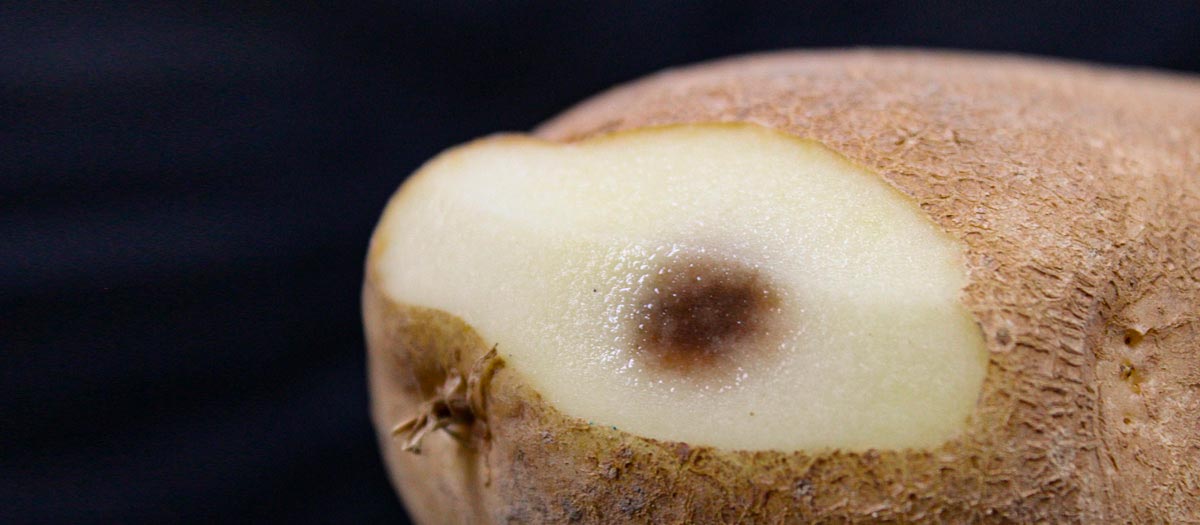Colruyt Group goes very far when it comes to improving the quality of potatoes. For a pilot project, they had a number of potatoes ‘mistreated’ by KU Leuven on purpose, so that blue spots would develop.
There was nothing to be seen from the appearance of the potatoes, but the bruises the potatoes suffered were detected by the hyperspectral camera that can see under the skin of the potato. In doing so, they demonstrate that the step towards commercial application of this technique is possible. “It is important that more parties get to work on this,” says Rony Neufkens, sales department manager for fruit and vegetable purchases at Colruyt Group.
Within the potato project, in which Colruyt Group sits around the table together with growers and packers, shock blue emerged as an important quality problem. Shock blue occurs during the harvesting and / or the further processing of potatoes. The extent to which it occurs depends on the growing conditions and the variety. Colruyt Group applies zero tolerance in this, but the problem is very difficult to detect. The blue manifests itself under the skin and only emerges when taking samples.

In search of a solution, it turned out that KU Leuven had a technique to look inside a potato. “We use hyperspectral cameras and machine learning software that give us insight up to a few mm below the skin of the potato. In the test setting, we were able to accelerate the processing speed of this information to such an extent that it is possible to detect shock blue in potatoes on a conveyor belt, ”says researcher Niels Wouters of KU Leuven. “We worked at a speed of 12 centimeters per second, common with potato sorters now, where we could determine with an accuracy of 85 to 95%, depending on the variety, whether a potato was healthy or not. These parameters can be further improved through optimization. ”
According to KU Leuven, the development in hyperspectral cameras is such that the technology lends itself to further commercial use. Colruyt Group hopes that the technology for bump blue detection will be adopted quickly. “Nothing is more annoying for the customer when you have to peel off a large part of the potato. That is lost and gives a bad feeling, ”says Rony Neufkens. “That’s why we don’t want to keep this knowledge to ourselves. It is important that more parties get to work on this. ”
In the upcoming Primeur 5, an extensive article will be published about the research into impact blue by Colruyt and KU Leuven.
Blackspot bruise forms when the damaged cells’ phenolic compounds are oxidized by the enzyme polyphenol oxidase, which in turn produces quinones (pink color), and then transforms into dark pigments (melanin). To check for bruising, the potato must be peeled. The damaged cells appear as pink, red, brown, or black spots. Development of the black pigment is not immediate, however; it takes time to become visually apparent. The darkening is irreversible and considered a defect both for fresh and processing potatoes.
Ideally, the sooner blackspot bruises are identified from impacts caused by conditions or equipment, the easier it will be to implement more effective changes or adjustments to reduce the potential for blackspot bruising. Peeling potatoes to identify the proportion of early blackspot bruise symptoms is therefore a useful tool to prevent further damage and to adjust handling protocols for bruise control.
Shatter bruise appears as cuts or cracks in the skin that reduce the visual appeal to a consumer. Water loss through these wounds is greater until healed. These cracks and cuts are also entry points for diseases such as Pythium leak, bacterial soft rot, and Fusarium dry rot.
For more information:
Silja Decock
Colruyt Group
www.colruytgroup.com


